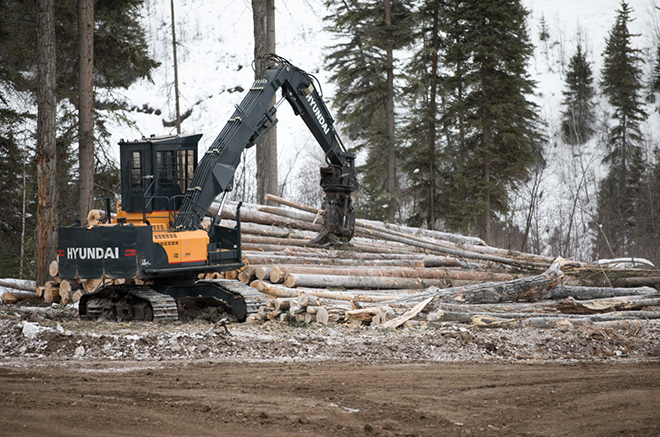Construction Activities
We're committed to providing Peace region residents, businesses, communities and Indigenous Nations with information about Site C construction activities in a timely manner.
Construction Activities Nav
While filling the reservoir is one of the last activities on the Site C project, clearing the area began years in advance. Removing trees and vegetation from the dam site and the reservoir area helps ensure boater safety and reduce impacts to dam construction and operations.
Clearing has also taken place along the Highway 29 realignment.

Managing debris in the water and on land
To reduce the amount of debris that may end up in the water and at the dam site, we've cleared about three quarters of the vegetation within the reservoir footprint. Some trees will remain in the lower areas and on steep slopes where it's unsafe to work. Debris which could impact dam or boater safety is removed, burned, bucked into short logs, chipped or mulched.
We haul merchantable trees to local mills. Our ability to sell the trees is based on factors such as size, species, and location. Closures of local mills or capacity limitations of mills, and limited road access to some clearing areas can reduce our ability to haul away some of the trees.
To capture any debris that ends up in the water, we built debris structures on the Peace River and the Moberly River, which will catch the remaining logs and vegetation. These debris structures are cleared regularly.
Burning debris
Our controlled debris burning program is substantially complete.
The program involves careful planning and monitoring of all burning. This includes the timing, size and location of the wood piles, and the amount of smoke emitted. We comply with regulatory requirements and the Site C Smoke Management Plan.
Burning can only occur in the fall and winter months during a specific weather condition, known as a venting window. A venting window means that there is enough positive atmospheric pressure and air flow to disperse smoke. We burn during custom venting windows authorized under provincial regulations, specific to Site C.
We monitor weather and air quality at four of our monitoring stations near Site C. In addition, the Province of B.C. has weather and fine particulate monitoring stations in the Fort St. John area. We share monitoring results with the Province of B.C., which may issue public weather and air quality warnings, if needed.
What to do if you see a wildfire or uncontrolled burning
Safety is our top priority. For the fastest response, any potential wildfire or uncontrolled burn should be immediately reported to the BC Wildfire Service at 1 800 663 5555 or *5555 on a cell phone.
Sign up for burning updates
Email us to sign up for regular updates on burning.
Learn more
- Information sheet: Clearing and debris management PDF • 1 MB
- Clearing FAQ PDF • 97 KB